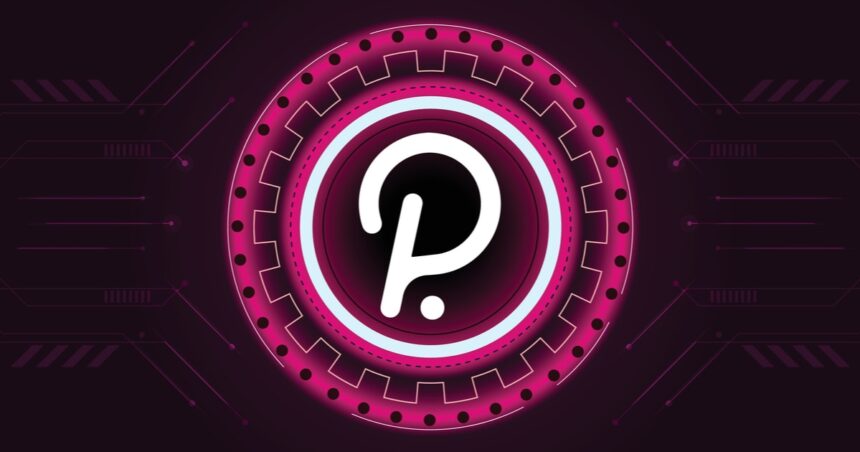Introduction
Polkadot (DOT) is rapidly gaining recognition in the world of cryptocurrencies and blockchain technology due to its groundbreaking approach to interoperability. Unlike traditional blockchain systems, which often operate in isolation, Polkadot is designed to enable different blockchains to work together. This vision of cross-chain compatibility has positioned Polkadot as one of the most influential blockchain projects of the decade. In this article, we’ll dive deep into Polkadot’s history, its biography, the impact on daily life, and its growing significance in society.
What is Polkadot (DOT)?
Polkadot (DOT) is a next-generation blockchain platform created by Gavin Wood, one of the co-founders of Ethereum. Launched in 2020, Polkadot aims to solve a critical issue in blockchain technology: interoperability. While blockchain networks like Ethereum and Bitcoin are isolated, Polkadot allows different blockchains to communicate and share data seamlessly, making it easier to transfer assets and information across various networks.
At its core, Polkadot is built around a multi-chain framework, where individual blockchains (called parachains) can run in parallel, each with its own specialized features. The platform’s native token, DOT, serves various functions within the ecosystem, such as governance, staking, and bonding.
The History of Polkadot (DOT)
Polkadot’s history dates back to 2016 when Gavin Wood, the former Chief Technology Officer of Ethereum, envisioned a platform that could overcome the limitations of current blockchain technology. He started developing Polkadot under the umbrella of his company, Parity Technologies, which was later rebranded as Web3 Foundation.
The idea behind Polkadot was ambitious: to create a scalable and interoperable blockchain network where multiple blockchains could work together. This would overcome Ethereum’s issues with scalability and Bitcoin’s limitations when it comes to data sharing between different networks.
Polkadot launched its initial coin offering (ICO) in 2017, and the platform officially went live in 2020. Since then, it has continued to attract attention and investment, quickly gaining recognition as one of the most promising blockchain projects in the space.
Daily Life Impacts of Polkadot (DOT)
Polkadot’s influence on the daily lives of individuals, businesses, and industries is profound. Here are some of the most impactful ways in which Polkadot is shaping the world today:
- Improved Blockchain Interoperability: One of the most significant impacts of Polkadot is its ability to connect various blockchains. For individuals, this means that assets like cryptocurrency or data can be seamlessly transferred between different networks, allowing for greater flexibility and efficiency.
- Enhanced Privacy and Security: Polkadot’s security protocol ensures that transactions and data across different parachains are secure, providing peace of mind for users. This enhanced security benefits industries ranging from finance to healthcare, where data privacy is a top priority.
- Fostering Decentralized Finance (DeFi): Polkadot plays a critical role in the DeFi ecosystem by enabling developers to build customized blockchains (parachains) tailored to specific financial applications. As DeFi continues to grow, Polkadot offers a platform where various DeFi protocols can work together more effectively, making decentralized finance more robust.
- Boosting Developer Innovation: The Polkadot ecosystem allows developers to create specialized parachains without the need to build a new blockchain from scratch. This opens up new opportunities for innovation, especially for startups and developers looking to bring novel solutions to market faster.
- Global Financial Inclusion: By enabling cross-chain communication, Polkadot can contribute to financial inclusion in underserved areas of the world. People without access to traditional banking systems could benefit from decentralized finance solutions powered by Polkadot, providing them with easier access to financial services.
Fun Facts About Polkadot (DOT)
- Multi-Chain Ecosystem: Polkadot’s most unique feature is its ability to connect multiple blockchains through its relay chain, which is the central component of the network. This allows different blockchains to communicate with one another, creating a truly interoperable system.
- Gavin Wood’s Vision: Gavin Wood, Polkadot’s founder, was a key figure behind the development of Ethereum and wrote its original whitepaper. His decision to build Polkadot stemmed from the desire to overcome the limitations of Ethereum, especially its scalability issues.
- Governance by DOT Holders: Polkadot uses a unique governance model, where DOT holders have a say in network upgrades and decisions. This gives the Polkadot community a sense of ownership and participation in the platform’s future development.
- Initial Coin Offering (ICO): Polkadot’s ICO raised a remarkable $145 million in 2017, making it one of the largest ICOs at the time. This capital fueled the development of the platform and helped it become the powerhouse it is today.
- Parachain Auctions: To secure a parachain slot on Polkadot, projects must participate in parachain auctions. This mechanism ensures that only the most promising and valuable projects can gain access to the Polkadot network, enhancing the platform’s overall quality.
Frequently Asked Questions (FAQs)
- What is the purpose of Polkadot (DOT)? Polkadot is designed to enable interoperability between different blockchains, allowing them to communicate and transfer assets across various networks. Its goal is to make the blockchain ecosystem more efficient and scalable.
- How is Polkadot different from Ethereum? While Ethereum is a single-chain network, Polkadot is a multi-chain platform. This means that Polkadot can connect different blockchains, enabling greater scalability and interoperability.
- How does Polkadot make money? Polkadot’s ecosystem generates value through its parachain auctions, where projects bid for the opportunity to secure a slot on the network. Additionally, users who stake their DOT tokens help secure the network and receive rewards in return.
- Can I mine Polkadot (DOT)? Unlike Bitcoin, which relies on Proof of Work, Polkadot uses a Nominated Proof of Stake (NPoS) consensus mechanism. This means that instead of mining, users can participate in securing the network by staking DOT tokens.
- Is Polkadot a good investment? The investment potential of Polkadot, like any cryptocurrency, depends on market conditions and project adoption. Polkadot’s focus on interoperability and its growing ecosystem make it a promising long-term investment for many, but it is important to evaluate risks before investing.
The Significance of Polkadot (DOT) to Society
Polkadot’s potential goes beyond just technology—it is paving the way for innovative solutions to some of the most pressing issues in the blockchain industry. Here’s why Polkadot is significant to society:
- Encouraging Blockchain Adoption: By solving the issue of interoperability, Polkadot makes it easier for existing blockchain networks to communicate with one another. This encourages more widespread blockchain adoption across industries.
- Supporting Decentralized Governance: Polkadot’s community-driven governance model is a significant departure from traditional top-down decision-making processes in centralized institutions. By empowering users, Polkadot promotes a more decentralized and democratic approach to governance.
- Improving Blockchain Scalability: One of the key challenges facing blockchain networks today is scalability. Polkadot addresses this issue by enabling parallel processing through its parachains, significantly improving scalability and transaction speed.
- Environmental Impact: Polkadot’s Proof of Stake consensus mechanism is more energy-efficient than Proof of Work systems, contributing to a reduced carbon footprint for the network. This aligns with growing efforts to make cryptocurrencies more environmentally friendly.
- Building the Web3 Future: Polkadot is a key player in the development of Web3, the next generation of the internet that is decentralized and user-centric. As Web3 continues to evolve, Polkadot’s role in creating interoperable blockchains will be crucial to its success.
Conclusion
Polkadot (DOT) represents a breakthrough in the world of blockchain technology. Its vision of a multi-chain ecosystem where different blockchains can communicate and collaborate is setting the stage for the future of decentralized technology. Through its innovative design, energy-efficient consensus mechanism, and community-driven governance, Polkadot is not only changing the face of blockchain but is also contributing to a more inclusive and secure global financial system. With Polkadot’s growth, the blockchain space is poised for a revolution, offering a more connected, efficient, and decentralized future.










